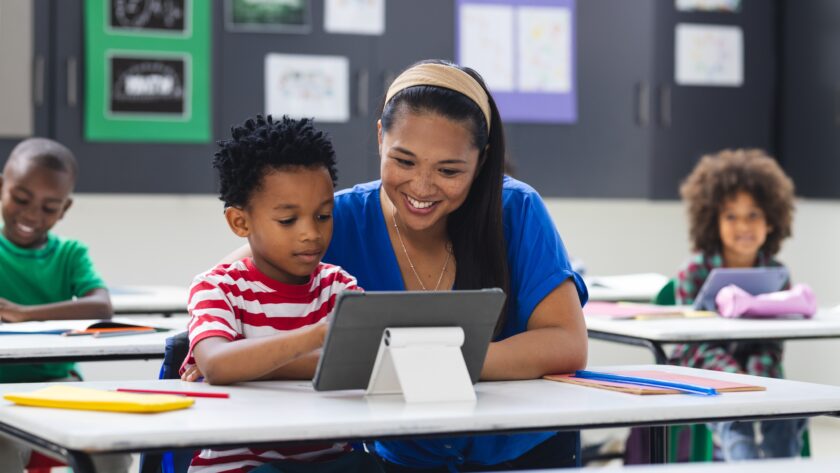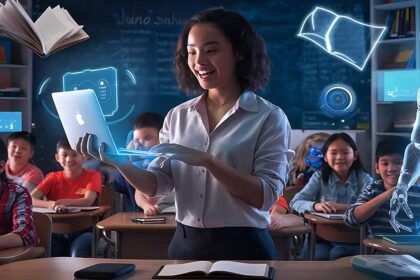Education has always been a powerful force for change, shaping societies and empowering individuals to achieve their potential. Over the centuries, education has evolved to meet the demands of an ever-changing world. From ancient civilizations to the digital age, the methods, tools, and structures of education have continually adapted to reflect new cultural, technological, and social shifts.
Today, we stand at a critical juncture where the landscape of education is being reshaped by globalization, technology, and evolving societal needs. The traditional model of education, with its fixed curricula and one-size-fits-all approach, is no longer sufficient to prepare students for the challenges of the 21st century. In this article, we will explore the evolution of education, the factors driving change, and how modern education systems are adapting to the needs of a rapidly transforming world.
1. The Traditional Education System: Foundations and Limitations
Historically, education systems were built on the principles of providing standardized knowledge to a limited group of people. In ancient times, education was primarily reserved for the elite and was often delivered by private tutors or through religious institutions. The primary focus was on memorization, rote learning, and the transfer of knowledge that was seen as essential for survival and prosperity.
The formalization of education began with the establishment of schools, universities, and public education systems. During the 18th and 19th centuries, many countries began to establish public schooling systems, often with a focus on literacy, basic mathematics, and vocational training. This shift was driven by the rise of industrialization, which required a more educated workforce to meet the demands of factories and businesses.
However, traditional education models have often been criticized for their rigidity. The focus on standardized tests, fixed curricula, and uniform teaching methods leaves little room for personalization or critical thinking. This one-size-fits-all approach to education has proven inadequate in preparing students for the complex and dynamic challenges of the modern world.
2. The Rise of Technology in Education
The advent of technology has been one of the most significant factors influencing the evolution of education in recent decades. In the past few decades, technological advancements such as personal computers, the internet, and mobile devices have revolutionized how we learn, communicate, and access information.
Digital Learning: Expanding Access and Opportunities
Digital tools and platforms have broken down many of the barriers that once limited access to education. Online courses, e-learning platforms, and digital textbooks have allowed education to transcend geographic boundaries. Platforms like Coursera, edX, and Khan Academy have made learning more accessible, providing students with the opportunity to gain knowledge from prestigious institutions and experts from around the world.
Technology has enabled personalized learning, where students can learn at their own pace and focus on areas they need the most help with. AI-driven systems can monitor students’ progress and adapt the content to suit their learning style, ensuring that no student is left behind. These technologies are increasingly being incorporated into classrooms, allowing teachers to cater to the individual needs of each student.
The Integration of Virtual and Augmented Reality
Another exciting development in education technology is the rise of Virtual Reality (VR) and Augmented Reality (AR). These immersive technologies offer a more hands-on and interactive way to learn. Students can explore historical sites, conduct virtual science experiments, or even walk through the human body in 3D—all from the comfort of their classroom or home.
For example, medical students can use VR to simulate surgeries, providing practical experience without the need for real-life procedures. Similarly, students in history or geography classes can take virtual field trips to distant lands, exploring ancient civilizations and learning about different cultures firsthand.
3. Lifelong Learning and Skills Development
In the modern world, the pace of change is accelerating. Rapid advancements in technology, coupled with globalization, have created a dynamic job market that requires workers to continuously update their skills. As a result, lifelong learning has become an essential component of the modern educational landscape.
Gone are the days when students would complete their education at a young age and enter the workforce for a lifetime. Today, many people pursue continuous learning throughout their careers to stay competitive and relevant in their fields. This shift has led to the rise of micro-credentials, online certifications, and skills-based learning.
Platforms such as LinkedIn Learning, Udacity, and General Assembly allow individuals to pursue short courses and earn certifications in areas such as digital marketing, coding, project management, and data analytics. This evolution in education recognizes the importance of practical, job-ready skills and enables individuals to stay adaptable in an ever-changing world.
4. Education for the Future: Preparing for Uncertainty
The future of education will need to prepare students for a world that is increasingly unpredictable. The challenges of the 21st century—such as climate change, economic instability, and the rise of artificial intelligence—demand new skills, mindsets, and approaches to learning.
Emphasizing Critical Thinking and Problem-Solving
One key shift is a move away from rote memorization to an emphasis on critical thinking, problem-solving, and creativity. Education systems around the world are increasingly focusing on developing students’ ability to think critically, analyze complex issues, and come up with innovative solutions. This shift is essential for preparing students for a world in which information is constantly evolving, and the ability to adapt to new challenges is key.
Collaboration and Emotional Intelligence
As automation and artificial intelligence continue to transform industries, jobs that require emotional intelligence, collaboration, and communication will become even more valuable. Modern education systems are focusing on teaching students how to work in teams, empathize with others, and develop interpersonal skills. These “soft skills” are becoming just as important as technical knowledge in the workplace.
Furthermore, social-emotional learning (SEL) programs are gaining traction in schools to help students manage their emotions, build positive relationships, and develop resilience in the face of challenges. These programs aim to prepare students not only for academic success but for life success.
The Rise of Hybrid and Blended Learning
The COVID-19 pandemic has accelerated the adoption of hybrid and blended learning models, where students split their time between in-person instruction and online learning. This flexible approach allows students to benefit from both face-to-face interactions with teachers and the convenience of online resources.
Hybrid learning is likely to continue playing a significant role in the future of education, allowing institutions to reach more students, offer a broader range of learning experiences, and cater to diverse learning preferences.
5. Global Education: Connecting Learners Around the World
Another significant change in education is the growing globalization of education. As the world becomes more interconnected, students from different countries are collaborating, sharing ideas, and engaging in cross-cultural learning.
International Collaboration and Exchange Programs
Global collaboration has become increasingly important in preparing students to navigate an interconnected world. Schools, universities, and organizations are facilitating virtual exchange programs, where students can work on joint projects, attend global conferences, or interact with peers from different cultural backgrounds.
Such initiatives help students develop cultural competence, empathy, and the ability to work in diverse teams. These skills are crucial for thriving in a globalized workforce and fostering a more inclusive society.
Access to Global Resources
In addition to collaboration, technology has expanded access to global resources, allowing students to learn from anywhere in the world. Open-access resources such as OpenCourseWare (OCW), TED Talks, and educational YouTube channels allow students to explore a wide variety of subjects and gain insights from leading experts across the globe.
6. Challenges and the Future of Education
While the evolution of education offers many benefits, it also comes with its own set of challenges.
The Digital Divide
One of the most significant challenges is the digital divide, where access to technology and high-speed internet is limited, particularly in rural and underdeveloped areas. This gap creates inequalities in educational opportunities and can further exacerbate social and economic disparities.
Data Privacy and Security
As educational systems increasingly rely on digital platforms, concerns about data privacy and security are growing. Educational institutions and technology companies must work together to ensure that students’ personal data is protected from misuse and exploitation.
Teacher Training and Support
For technology to be effectively integrated into the classroom, teachers must receive adequate training and support. Professional development programs that equip educators with the skills to use digital tools and implement innovative teaching strategies will be essential for the continued success of modern education.
Conclusion
The evolution of education has been shaped by the changing needs of society, and as the world continues to evolve, so too will education. With technological advancements, the rise of global collaboration, and the growing demand for lifelong learning, education is becoming more accessible, personalized, and adaptable than ever before.
As we look to the future, education must continue to evolve in ways that prepare students not only for the challenges of today but also for the uncertainties of tomorrow. By embracing innovation, fostering critical thinking, and promoting global collaboration, we can ensure that the next generation is equipped to thrive in an ever-changing world.
Key Takeaways:
- Education is evolving in response to technological advances, globalization, and societal shifts.
- Online learning, AI, and mobile platforms have democratized access to education, allowing students to learn anytime, anywhere.
- Lifelong learning is becoming essential as the job market demands new skills and adaptability.
- The future of education will focus on critical thinking, collaboration, and emotional intelligence.
- Global collaboration and virtual exchange programs are preparing students to work in an interconnected world.
- Challenges such as the digital divide, data privacy, and teacher training must be addressed to fully realize the potential of modern education.





